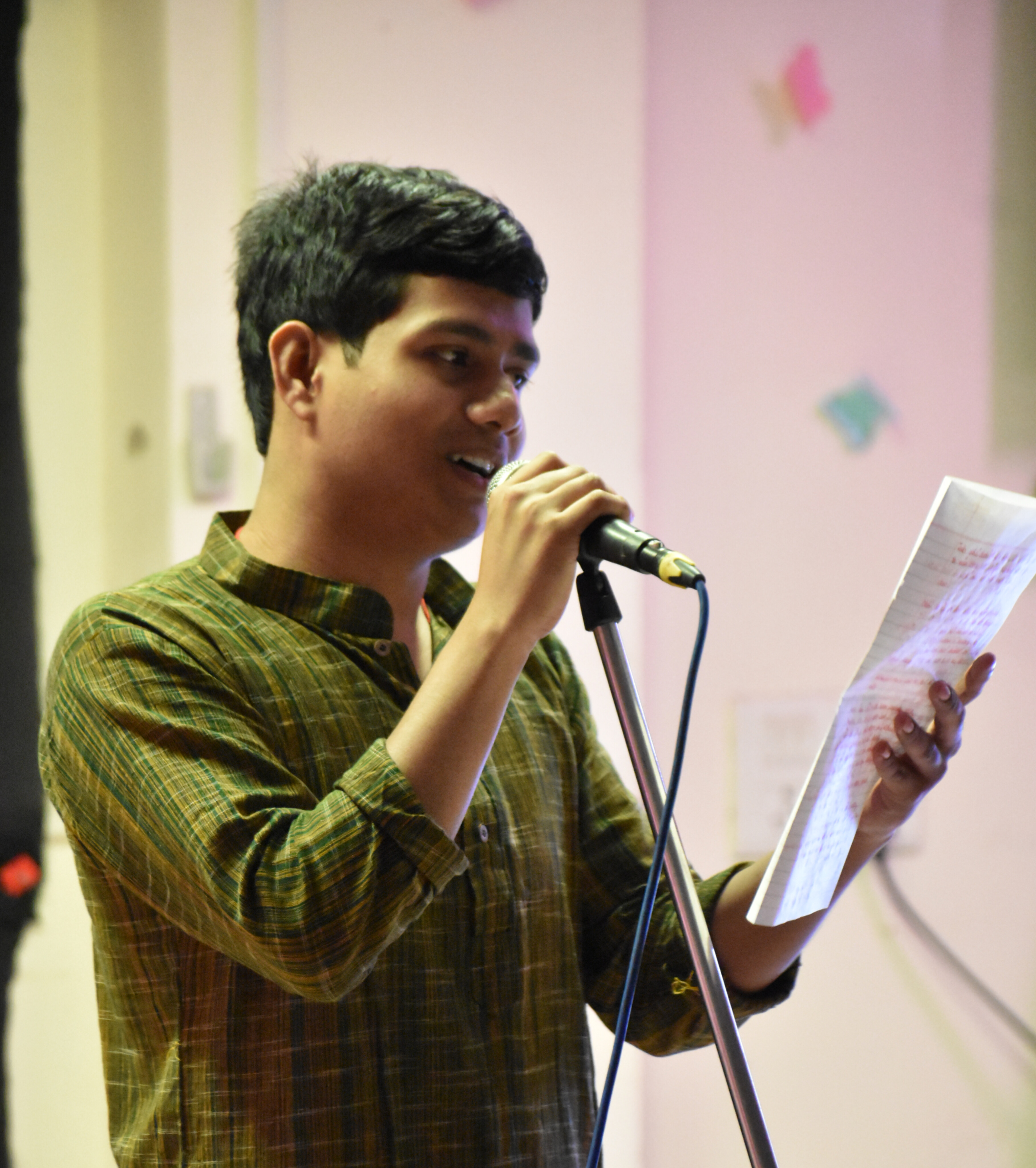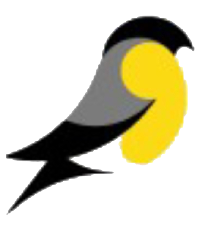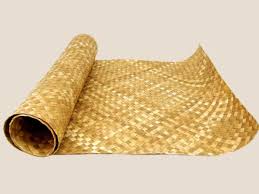
THE TRADITIONAL MAT
The mat-making process of Birbhum district is not a modern one; rather, it is the traditional process that is passed through generations, from mothers to their daughters. This creation of mat-making holds rich cultural and indigenous traditions of West Bengal, which is deeply affected by its unique geographical and socio-economic landscape. These mats are in the local language called ‘madur’. From the weaving of threads to the final output, every portion of the mat tells the story of constant discipline, hard work, resilience, and the story of every woman. This mat-making process is not only about the history of oral tradition, but it is also about the legacy, empowerment, and the hardships of the women who made their tradition continuous till this modern era. So, it won’t be vague to argue that behind every creation of a mat, there lies the story of an independent and powerful woman.

WEAVING A MAT
INTRODUCTION: BIRBHUM’S CULTURAL TAPESTRY & MAT WEAVING
Birbhum district, not just a district but a region of vibrant cultures that represents India and West Bengal. It is situated in the northern side district of West Bengal’s Bardhaman Division. The most popular art forms of this district are starting from vibrant folk art to handicraft traditions. The popularization of this culture didn’t happen all of a sudden, but it went through diverse contacts, intermingling of different cultures, and of course, the influence of historical figures.
The most notable art forms of the Birbhum district are Shola pith craft, Kantha stitch, Santhal dance, Bhittichitra art of the Santhals, doll making through clay, terracotta temple architecture, bowl making, mat weaving, and many more. Birbhum holds countless numbers of cultures that haven’t been studied and added to the mainstream historical accounts. The influence of geographical factors also matters the most as this district is composed of a different kind of dry laterite soil, which at maximum is needed as a raw material for the making of crafts and art forms.
The making of mats in India can be traced from the ancient period during the Indus Valley civilization. From the archival records of the medieval period, the mat weaving process in Bengal got its final shape in medieval times, and these mats were used for both luxury and ordinary household purposes. Earlier, it was a household craft that later found its way into commerce. In the Birbhum district, an old age community known as Mahali, they practise this mat-making. This community is popular for its bamboo craft and the creation of mats. They belong to the Mahishya caste. They make two kinds of Mat, one of which is made up of date palm leaves, and the other of Palmyra palm leaves. This community speaks Mahali, Santhali, Mundari, and Sadri. Their origin can be traced to the Chota Nagpur plateau of India.
THE TYPES OF MAT & THEIR RAW MATERIALS IN BIRBHUM
Mat weaving in the Birbhum district shows one of the most distinctive features: the knowledge of ecology and environment, and the utilisation of natural resources, which are renewable in nature and environment-friendly. The local names of the date palm leaves are ‘Talai or Tal’ and ‘Chatai’, used for the Palmyra palm. This making of mats and using them for commercial purposes also shows the development of the Household industry, where women play an important role as creative artists and artisans in preserving the technique for future generations. They are not only used for daily purposes but also hold religious significance. The types of mats are;
DATE PALM LEAF MATS (TALAI OR TAL)

DATE PALM LEAF
In the Birbhum district, the making of mats from tal leaves takes place in the Sattore village of Bolpur Sriniketan. The artisans make this so skillfully with their hands, with a guarantee of 100% sustainability. These mats are known as Talai Madur or Talai mats. The most important feature of these mats is that they are made with less water, and require basic available natural resources from the locality, and for finishing and dying, they require no or minimal chemical requirements. This makes these mats eco-friendly and renewable in nature. These mats are brown or light brown in colour, and it is best suited for sitting or sleeping. Apart from that, one could use it for prayer purposes. The main source of making these mats is the date palm trees, and Birbhum district is the main hub of the cultivation of black date trees.
PALMYRA PALM LEAF MATS (CHATAI)
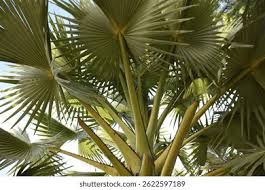
PALYMRE LEAF
In the Birbhum district, another form of mats, which are popular, are called Chatai mats, and they are made up of Palmyra Palm leaves. The scientific name of the Palmyra leaf is Borassus flabellifer. These mats often carry a fan-like structure. These are made from the Palmyra leaves, and using the flat portion of the leaves, these mats are made. The making of these mats is not only popular in Birbhum, but also popular in Bankura and Purulia districts of West Bengal. Not much is known about this leaf, but it is said that they are versatile in nature and can grow in less water content. These leaves are also used in making various kinds of handicraft items such as baskets, handbags, and many more. These mats are used for daily purposes, not for any kind of ritualistic or religious purposes.
STEP-BY-STEP PROCESS OF MAT PRODUCTION
In creating both types of mats, the first step is to harvest the leaves from both the trees, palm trees, and palmyra trees. Then these leaves are left to be dried in the sun; the more dried the leaves, the more flexibility which makes the smooth weaving possible.
Then, after the drying process, the rough portions of the leaves are removed, and then they are soaked for at least thirty minutes. This task is very important as the water will help those leaves become flexible and easy to weave.
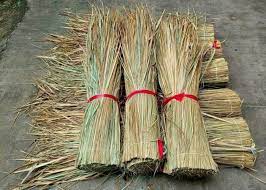
DRYING OF THE LEAVES
The leaves are being arranged into two parts, based on the thickness of the mats. More heavier the mats, more thicker the leaves.
The next step is dying; it is one of the most crucial ingredients of mat weaving. In this process, natural colors are used from leaves nd many more natural resources. There is a prominence of using magenta, green, and blue dye. The traditional mats are colourless.
After the usage of colours, they are again sun-dried, and the hardest part comes is the process of weaving. The leaves are now being interlocked and interlaced. In this, leaves are laid out parallel and tied strongly; the addition of leaves is done in an alternative direction.
Now, this is the last stage that involves tucking the ends of the leaves tightly to prevent the mat from being damaged. A string is used to tuck up the ends of the leaves. The most time-consuming are the palm leaf mats, which almost take one week to complete a single mat, which is typically measured between 4 to 6 feet in length. It is important to note that no usage of motifs are there in these traditional mats of Birbhum; they are totally traditional and local.
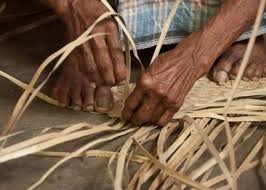
MAKING OF MAT FROM DATE PALM LEAF
THE ASHON
SOCIO-CULTURAL SIGNIFICANCE & CURRENT SCENARIO
The importance of the usage of the mats can be seen through the local customs and ceremonies. During the marriage, these mats hold special importance; it is one of the most cherished parts of a bride’s trousseau, it symbolises the creative skills of a woman, and brings prosperity and fulfillment to the married couple, and it can be seen among the many Bengalis that mat is being offered as a gift to the bride by his brother which depicts, brother’s love and affection towards her sister and a promising note or blessing of her wellbeing and prosperity.
Beyond this, these mats hold religious importance. In every household, particularly the Bengalis, the mats also serve as an aashon ( a mat which is used for sitting purposes by the priest, and also to keep idols ). These mats are used in rituals and ceremonies that symbolise simplicity and purity. Particularly, the date palm mats are used for the praying purpose among the Muslims, and also they are used in daily lifestyle for meditating and yoga.
In the current scenario, these mats play a vital role that giving identity to women artisans of Sattore village and Muslim women artisans of Illambazar. They are heavily used for commercial purposes. From these two villages, the mats are being supplied to the marketplace and the shops, including wholesale markets. Due to climate change, the weather conditions are extremely hot, and it is said that these mats have to ability to provide a cooling effect in this intense summer. Each Bengali household carries these mats, and to make them cooler, the mats are wiped out with a wet cotton cloth. This craft is promoting rural household industry, and some farmers also use it as a form of secondary income. It is a family craft where each and every member of the household helps in making it. For approximately 77% of craftspersons, mat weaving serves as their main source of income, based on statistical data. This craft is being protected under the initiative of the Government of West Bengal under the policy of Rural Craft and Cultural Hubs (RCCH) Program that was launched in the year 2016-19, and the Karma Tirtha Program, which is made to protect artisanal products that hold sustainable importance.
CONCLUSION

SATTORE VILLAGE OF BIRBHUM DISTRICT
This unique technique of mat weaving in the Birbhum district is socially, traditionally, economically, and culturally significant, which shows a deep-rooted craft that lies in the geographical characteristics, which became the medium of cultural expression and artistic creativity. It shows the youth the pathways of modern sustainability and ecological adaptation. This is what the craft of Birbhum district defines its uniqueness and identity.
WORKS CITED
https://www.researchgate.net/publication/385299293_Palmyra_Palm-A_Lesser-Known_Fruit_for_Profitability_and_Nutritional_Security_for_Marginal_and_Small_Farmers.
https://thanhcongcraft.com/how-to-weave-a-mat-from-palm-leaves-step-by-step/. Accessed 25 June 2025.
Micro, Small & Medium Enterprises, Government of West Bengal | Micro, Small & Medium Enterprises, Government of West Bengal, https://wbmsme.gov.in/sites/default/files/cms/reportpdf/1535441738KARMA%20TIRTHA%20-%20A%20falgship%20programme%20of%20State%20Govt..pdf. Accessed 25 June 2025.
“:::::: Daricha Foundation ::::::.” Daricha Foundation, https://www.daricha.org/districts.aspx?ID=30&Name=Birbhum. Accessed 22 June 2025.
“Date Palm Leaf Mat: A Sustainable Textile Craft | Request PDF.” ResearchGate, https://www.researchgate.net/publication/378191802_Date_Palm_Leaf_Mat_A_Sustainable_Textile_Craft. Accessed 25 June 2025.
“Date palm leaf pati.” Wikipedia, https://en.wikipedia.org/wiki/Date_palm_leaf_pati. Accessed 25 June 2025.
“Madur.” Daricha, https://www.daricha.org/sub_genre.aspx?ID=91&Name=Madur. Accessed 23 June 2025.
“Mats and Baskets of West Bengal – Global InCH – Encyclopedia of Intangible Cultural Heritage.” Global InCH, https://www.globalinch.org/craft/mats-and-baskets-of-west-bengal/. Accessed 25 June 2025.
“RURAL CRAFT HUB.” West Bengal Khadi & Village Industries Board, http://www.wbkvib.org.in/index.php/village-industries/rural-craft-hub. Accessed 25 June 2025.

